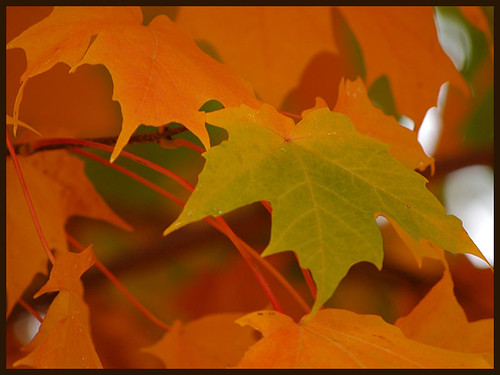Not just a feast for the eyes, the red, orange, yellow…and eventually brown of this brilliant time of year, translates into our produce section. Like the brilliant shades of fall, the color palette of our diet reflects our versatile seasonal bounty and the array of nutrients of it provides.

Red
As we move further into fall, bright, red apples and rich pomegranates take the place of watermelon and summer tomatoes. Rich in potassium, vitamin C and fiber, these versatile, delicious fruits can round out a simple snack, salad or dessert.
Orange
Of all of the fall colors, orange is probably the most widely consumed. Fresh sweet potato and pumpkin can be found in the produce section or used as a key ingredient in an array of foods throughout the supermarket. Rich in beta carotene and vitamin C (and fiber when you eat the skin of a sweet potato), these versatile starchy vegetables can be incorporated into a variety of recipes from soup to dessert like these for Pumped Up Pumpkin Bread, Pumpkin Irish Oatmeal or Stuffed Mexican Sweet Potatoes.
Yellow
Bright yellow leaves can’t be missed among the richer, darker colors of fall. Acorn, butternut or spaghetti squash can be roasted, used to create creamy soups or uniquely prepared as is done in this recipe for Quinoa-Stuffed Acorn Squash. Butternut and spaghetti squash can also be enjoyed in place of ravioli or spaghetti in seasonal Italian dinners.
Brown
No doubt, the least beautiful point in the fall is when the leaves have dropped but the snow has yet to fall, leaving us with a brown (sometimes gray) backdrop. However, when it comes to our produce russet potatoes, mushrooms and other root vegetables should not be overlooked their many benefits and for the nutrition they offer, which includes potassium and vitamins B6 and C.